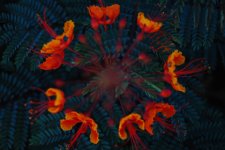boojum
Mentor
I ran across this blurb on the internet. I do not know the author and would not throw away my CMOS cameras but I do agree that CCD has some special magic to it. His point that Hasselblad still makes CCD sensors has some weight. Anyway, here is the article. I'm hanging on to my M8.2 and M9. What do you think?
https://www.digitalcameraworld.com/...ll-the-best-so-im-selling-all-my-cmos-cameras
https://www.digitalcameraworld.com/...ll-the-best-so-im-selling-all-my-cmos-cameras
ptpdprinter
Mentor
I ran across this blurb on the internet. I do not know the author and would not throw away my CMOS cameras but I do agree that CCD has some special magic to it.
I don't know about "special magic", but if you like the images the CCD sensors in your M8.2 and M9 render, then it makes sense to continue to use them.
His point that Hasselblad still makes CCD sensors has some weight.
Perhaps I have overlooked something, but as best as I can tell from its website, Hasselblad no longer offers a digital camera or digital back with a CCD sensor. The H6D-100C, the X1D II 50C, and the 907X 50C all have CMOS sensors. It looks like the last Hasselblad to have a CCD sensor was the H5D-60 which was introduced in 2014.
Archlich
Well-known
People shoot whatever they like, which is totally fine. As long as the "magic" doesn't spawn some kind of premium that actually cost people extra hard-earned cash. Unfortunately this seems to be the case today.
Dogman
Mentor
I've always thought the early Nikons with CCDs had really nice Raw files. Unfortunately all my old Nikons with CCD sensors have multiple dead pixels.
Pál_K
Cameras. I has it.
Once again, I’ve never been able to tell the difference. I’ve deliberately photographed the exact same subjects in my neighborhood with a Konica-Minolta X1 (2005, CCD), Pentax K-10D (2006, CCD), Nikon D700 (2008, CMOS), and. Fuji X-Pro1 (2012, CMOS) and there isn’t a dime’s worth of difference I can see between the photos. To me, they all look like typical digital images and nothing at all like film.
What’s funny is that I’ll see some people praise the D700 for its CCD images - it’s not, it’s CMOS.
Maybe there really is a difference and I’m just not discerning enough to spot it.
What’s funny is that I’ll see some people praise the D700 for its CCD images - it’s not, it’s CMOS.
Maybe there really is a difference and I’m just not discerning enough to spot it.
peterm1
Mentor
I have recently resurrected 3 of my old CCD cameras - a Nikon D70s, a Nikon D200 and a Panasonic L1 four thirds camera (the mirrored type). I have not really used these much since buying my first CMOS sensor camera some years ago - a Nikon D700. In addition I still do, in any event, use a Leica M8 which similarly has a CCD sensor. All dinosaurs., I know. I did so specifically to test this theory about CCD sensors as I too have been reading about it on the internet.
I have not comprehensively done so yet. But I can say that the files from these are certainly nice enough, in fact probably better than I remember them to be (which is silly as I have many wonderful photos from these cameras and hence this should be no surprise). Do they have some kind of "magic" ju-ju? Call me an uncultivated vulgarian perhaps, but I cannot see it yet - though am willing to keep trying. What I can say is that these cameras are certainly capable of making good images (no surprise). But are they "better" than CMOS produced ones? That's the "rub".
I think my major "take away" so far is that, just as with CMOS sensors (and in fact even more so) it pays dividends to under expose these files, especially when shooting outside with bright skies etc. within the frame where I will typically under expose by as much as one full f stop. Without this, at the very least the files can look "thin" and at worst it runs the risk of producing ugly blown highlights. I realize that files from a CCD sensor are probably less capable than CMOS ones of being worked extensively in post to pull detail up from shadows, but I prefer dim shadows to blown highlights so on the whole I am happy with this compromise.
I suspect that I will continue to give these cameras a "run" from time to time even after I finish my "experiment" though I will avoid them in circumstances where I know the results will be marginal (e.g. at night or in very dim conditions when high ISO may be otherwise be needed and these sensors are know to be limited.)
BTW my favorite of this bunch is actually the D200 which still produces good images and feels fantastic in the hand - with better ergonomics than any of the others mentioned including the much later D700 which somehow fels a bit less comfortable, perhaps due to its greater bulk.
One of the photos I produced with the D70s (probably the least capable camera of the above list) is pictured below. Yes it has been worked on in "post" so is anything but straight from the camera - a part of my experiment was to see how well such files could produce the raw material for my normal approach to making images. I am pretty happy with it as I find it to be a pleasant image which reminds me that these cameras can at least do much of what I want.
 Through a Glass, Darkly by Life in Shadows, on Flickr
Through a Glass, Darkly by Life in Shadows, on Flickr
I have not comprehensively done so yet. But I can say that the files from these are certainly nice enough, in fact probably better than I remember them to be (which is silly as I have many wonderful photos from these cameras and hence this should be no surprise). Do they have some kind of "magic" ju-ju? Call me an uncultivated vulgarian perhaps, but I cannot see it yet - though am willing to keep trying. What I can say is that these cameras are certainly capable of making good images (no surprise). But are they "better" than CMOS produced ones? That's the "rub".
I think my major "take away" so far is that, just as with CMOS sensors (and in fact even more so) it pays dividends to under expose these files, especially when shooting outside with bright skies etc. within the frame where I will typically under expose by as much as one full f stop. Without this, at the very least the files can look "thin" and at worst it runs the risk of producing ugly blown highlights. I realize that files from a CCD sensor are probably less capable than CMOS ones of being worked extensively in post to pull detail up from shadows, but I prefer dim shadows to blown highlights so on the whole I am happy with this compromise.
I suspect that I will continue to give these cameras a "run" from time to time even after I finish my "experiment" though I will avoid them in circumstances where I know the results will be marginal (e.g. at night or in very dim conditions when high ISO may be otherwise be needed and these sensors are know to be limited.)
BTW my favorite of this bunch is actually the D200 which still produces good images and feels fantastic in the hand - with better ergonomics than any of the others mentioned including the much later D700 which somehow fels a bit less comfortable, perhaps due to its greater bulk.
One of the photos I produced with the D70s (probably the least capable camera of the above list) is pictured below. Yes it has been worked on in "post" so is anything but straight from the camera - a part of my experiment was to see how well such files could produce the raw material for my normal approach to making images. I am pretty happy with it as I find it to be a pleasant image which reminds me that these cameras can at least do much of what I want.
 Through a Glass, Darkly by Life in Shadows, on Flickr
Through a Glass, Darkly by Life in Shadows, on FlickrHasselblad probably used the Onsemi 50MPixel CCD.
If is no longer manufactured. No one makes large area CCD sensors anymore.
https://www.onsemi.com/products/sens...sors/kaf-50100
If you have an M9 and/or M Monochrom with the KAF-18500 with BG55 cover glass, the last of the breed.
If is no longer manufactured. No one makes large area CCD sensors anymore.
https://www.onsemi.com/products/sens...sors/kaf-50100
If you have an M9 and/or M Monochrom with the KAF-18500 with BG55 cover glass, the last of the breed.
As usual, the images (not great) do not support the argument. And yes, I have used both and can see a difference in some instances. It just isn't a difference I care about these days.
Ko.Fe.
Lenses 35/21 Gears 46/20
I'm holding to M9 after selling of M8 and abandoning any other digital Leica getting idea. CCD is part of it, but...
What I truly like are Ricoh GRD series, their CCD obviously can't be as sharp as M8/9 sensors, but I have better results of getting decent colors from them.
I'm fine with CMOS, it is not the sensor type, but viability to render decent colors SOOC or next to it. Panasonic, some Leica and Canon are good on it. Sonikon aren't.
What I truly like are Ricoh GRD series, their CCD obviously can't be as sharp as M8/9 sensors, but I have better results of getting decent colors from them.
I'm fine with CMOS, it is not the sensor type, but viability to render decent colors SOOC or next to it. Panasonic, some Leica and Canon are good on it. Sonikon aren't.
JoeV
Thin Air, Bright Sun
I have recently resurrected 3 of my old CCD cameras - a Nikon D70s, a Nikon D200 and a Panasonic L1 four thirds camera (the mirrored type). I have not really used these much since buying my first CMOS sensor camera some years ago - a Nikon D700. In addition I still do, in any event, use a Leica M8 which similarly has a CCD sensor. All dinosaurs., I know. I did so specifically to test this theory about CCD sensors as I too have been reading about it on the internet.
I have not comprehensively done so yet. But I can say that the files from these are certainly nice enough, in fact probably better than I remember them to be (which is silly as I have many wonderful photos from these cameras and hence this should be no surprise). Do they have some kind of "magic" ju-ju? Call me an uncultivated vulgarian perhaps, but I cannot see it yet - though am willing to keep trying. What I can say is that these cameras are certainly capable of making good images (no surprise). But are they "better" than CMOS produced ones? That's the "rub".
I think my major "take away" so far is that, just as with CMOS sensors (and in fact even more so) it pays dividends to under expose these files, especially when shooting outside with bright skies etc. within the frame where I will typically under expose by as much as one full f stop. Without this, at the very least the files can look "thin" and at worst it runs the risk of producing ugly blown highlights. I realize that files from a CCD sensor are probably less capable than CMOS ones of being worked extensively in post to pull detail up from shadows, but I prefer dim shadows to blown highlights so on the whole I am happy with this compromise.
I suspect that I will continue to give these cameras a "run" from time to time even after I finish my "experiment" though I will avoid them in circumstances where I know the results will be marginal (e.g. at night or in very dim conditions when high ISO may be otherwise be needed and these sensors are know to be limited.)
BTW my favorite of this bunch is actually the D200 which still produces good images and feels fantastic in the hand - with better ergonomics than any of the others mentioned including the much later D700 which somehow fels a bit less comfortable, perhaps due to its greater bulk.
One of the photos I produced with the D70s (probably the least capable camera of the above list) is pictured below. Yes it has been worked on in "post" so is anything but straight from the camera - a part of my experiment was to see how well such files could produce the raw material for my normal approach to making images. I am pretty happy with it as I find it to be a pleasant image which reminds me that these cameras can at least do much of what I want.
Through a Glass, Darkly by Life in Shadows, on Flickr
Are the vertical lines in this image from a window screen, or is this sensor-related?
peterm1
Mentor
Are the vertical lines in this image from a window screen, or is this sensor-related?
No it is not the sensor.
peterm1
Mentor
Maybe this would have been a better example of the colors from a D70s CCD sensor.
Gotta admit. It is not too shabby colorwise.
The only PP is a bit of sharpening and some boosting of contrast and vibrancy. (Both of which I find to be pretty much essential no matter what camera was used.)

Gotta admit. It is not too shabby colorwise.
The only PP is a bit of sharpening and some boosting of contrast and vibrancy. (Both of which I find to be pretty much essential no matter what camera was used.)

Gid
Well-known
I wonder whether the differences between CCD and CMOS (real or imagined) are more to do with the technology surrounding the sensors. CCD sensors were mostly used in cameras pre 2009, for example, Olympus E1, Nikon D70 (?), Leica M8 and M9, when dynamic range and high iso performance wasn't great. Lack of dynamic range may have had the greatest impact - lower tonal gradation, blocked shadows perhaps - resulting in images looking more like transparencies - often claimed for these cameras. One has always had to protect the highlights with those early cameras. In summarry, it may be the technological deficiencies that make the difference. But, what do I know. 
Rob-F
Likes Leicas
I wonder whether the differences between CCD and CMOS (real or imagined) are more to do with the technology surrounding the sensors. CCD sensors were mostly used in cameras pre 2009, for example, Olympus E1, Nikon D70 (?), Leica M8 and M9, when dynamic range and high iso performance wasn't great. Lack of dynamic range may have had the greatest impact - lower tonal gradation, blocked shadows perhaps - resulting in images looking more like transparencies - often claimed for these cameras. One has always had to protect the highlights with those early cameras. But, what do I know.
From what I gather, the M10's tendency to blow highlights is worse than that of the M8 or M9. And my need to protect the highlights seems no greater with my M9, than with my D700, which often requires a -1/3 exposure comp. In fact, under conditions that kodak used to call "cloudy bright," there are times when I need to run my M9 at +1/3.
It is funny how the M8 and M9 are supposedly great due to the CCD but the same DSLRs aren't. Also, the Pentax 645D should be the ultimate sought after CCD camera! It isn't.
Last edited:
Timmyjoe
Mentor
I certainly think the CCD sensors render differently than the CMOS sensors, whether that is better or worse is in the eye of the beholder.
I always felt my M9 rendered colors like Kodak EPP100 Ektachrome, a film I loved that has been sadly discontinued for years.
Best,
-Tim
I always felt my M9 rendered colors like Kodak EPP100 Ektachrome, a film I loved that has been sadly discontinued for years.
Best,
-Tim
I certainly think the CCD sensors render differently than the CMOS sensors, whether that is better or worse is in the eye of the beholder.
I always felt my M9 rendered colors like Kodak EPP100 Ektachrome, a film I loved that has been sadly discontinued for years.
Best,
-Tim
I always liked the reds on my M9.
bluesun267
Well-known
I haven't paid much mind to the advances/changes in digital. I'm a film guy. But I've had the original EOS-M for several years which has been very adequate for taking online pictures (with an LTM adapter) or in my home B/W scanning setup.
Recently a Nikon D60 fell into my lap for nearly free. Like new with only 1900 prior shutter actuations. Finally something I could put my Nikkor manual lenses on without fussing with adapters! (yes I know, it's not even metered with these lenses, but then I'm used to Barnacks.)
Well I was actually quite impressed taking it out for a photo walk. It got me thinking about CCD sensors, having read a few threads similar to this one in recent months.
It behaves very much like slide film. The colors are gorgeous. And it loves underexposure.
It made me realize something: Even if I can get a slide-like result with digital, there is something absent from the process for me, so no I won't be shooting less slide film. In fact I view it as a possible tool for pre-visualizing color reversal film images. I doubt if I'd take both cameras out at the same time, but working with the D60 in meterless fashion may serve to inform my film shooting.
Below: Nikon D60, Nikkor Micro 55/2.8



Recently a Nikon D60 fell into my lap for nearly free. Like new with only 1900 prior shutter actuations. Finally something I could put my Nikkor manual lenses on without fussing with adapters! (yes I know, it's not even metered with these lenses, but then I'm used to Barnacks.)
Well I was actually quite impressed taking it out for a photo walk. It got me thinking about CCD sensors, having read a few threads similar to this one in recent months.
It behaves very much like slide film. The colors are gorgeous. And it loves underexposure.
It made me realize something: Even if I can get a slide-like result with digital, there is something absent from the process for me, so no I won't be shooting less slide film. In fact I view it as a possible tool for pre-visualizing color reversal film images. I doubt if I'd take both cameras out at the same time, but working with the D60 in meterless fashion may serve to inform my film shooting.
Below: Nikon D60, Nikkor Micro 55/2.8



raydm6
Yay! Cameras! 🙈🙉🙊┌( ಠ_ಠ)┘ [◉"]
There’s a CCD Sensor Compacts thread with some nice examples. https://www.rangefinderforum.com/node/4768956
I wonder if we should start another for non-compacts? These look nice as well.
I wonder if we should start another for non-compacts? These look nice as well.
boojum
Mentor
I posed this endless question because when I compare an M9 to an M240 they are both good but the M9 "puts it up to 11." I have not taken a double-blind test on this. But I have spent my money and have the cameras and prefer the M9. I have had good luck with it and with that Cooke Amotal it is really sweet. And here, again, is an example of what a CCD sensor does.
M9 + Cooke Amotal
M9 + Cooke Amotal
Share:
-
This site uses cookies to help personalise content, tailor your experience and to keep you logged in if you register.
By continuing to use this site, you are consenting to our use of cookies.


